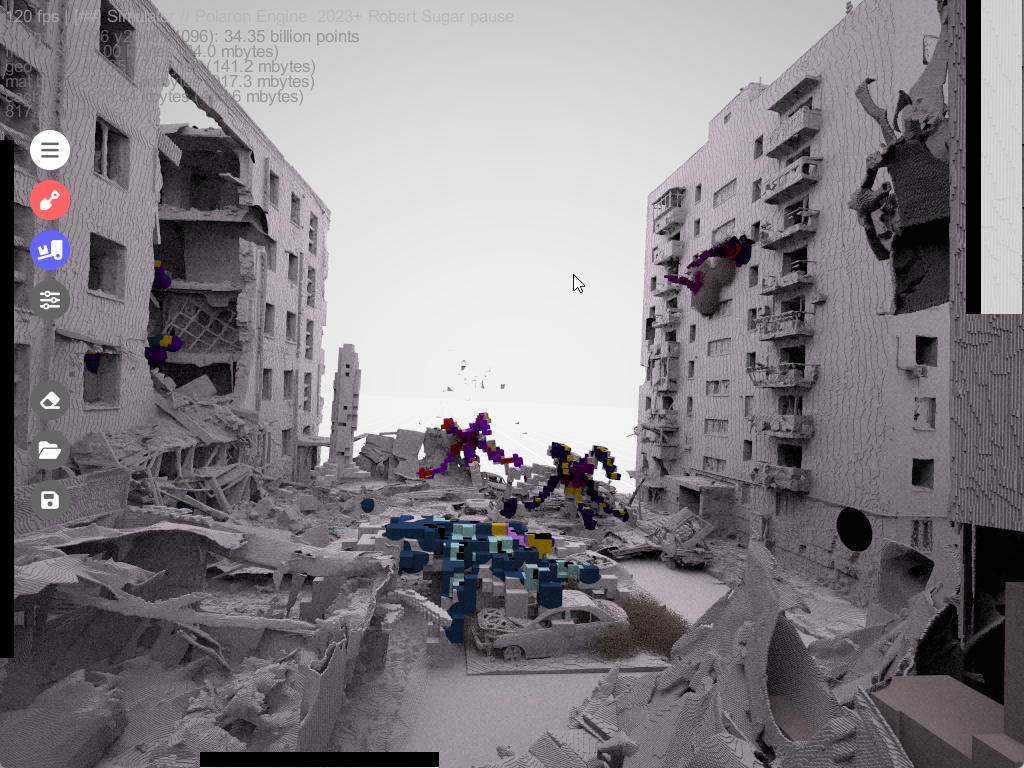The Writhe – a bio-mechanical organism has emerged and has taken over a small area of the UK.
As the human faction, you must attempt to rescue as many civilians as possible and will face many dilemmas – with limited resources and choices being compounded by the damage done to the infrastructure and need to support civilian evacuation – whilst fighting back the Writhe.
As the Writhe, you must grow and expand and consume as much bio-matter as possible, with humans cognitive powers, enabling you to become more intelligent. Ambush, deceive, burrow and writhe your way to dominance. You must grow and survive against an asymmetric opponent – whilst ensuring your food source cannot escape and curtail your plans.
You can follow the development of Writhe & Fall (working title) at www.writheandfall.com or sign up for Ealy access below.
“… There’s still cellular activity in these burned remains. They’re not dead yet.”
– Fuchs – The Thing
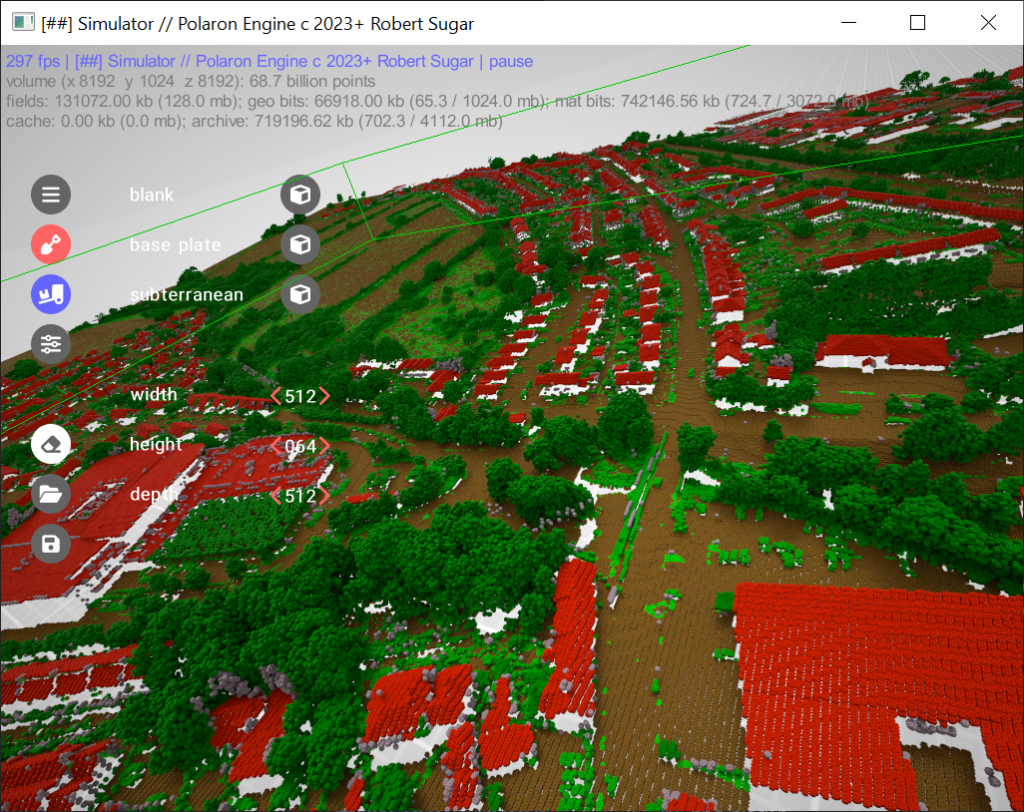
Summary
Writhe & Fall blends the combination of a Reverse Horror game (we love Carrion) with an RTS game mechanics routed in Urban and Combined Arms warfare; all played out inside of a fully destructible environment.
The complexity of these scenes – based on real-locations answers the “I bet could beat the Blob / Thing / Alien / Invasion” itch we have all felt. But life isn’t simple – and the civilians must be rescued or absorbed. By allowing the player to play as both the Military and Administrative forces of the humans against a seemingly malignant and unknown force – we force dilemmas onto both players.
Reveal yourself to quickly and the humans can react fast and force you to use your resources in defence or attack instead of evolving. The Writhe player can choose to attack infrastructure to deny capabilities to the opponent – or distract them to force resource away, or evolve new capabilities to combat theirs.
The data mapping allows us to produce a series of stages and phases – from which we can direct the individual and group entities to traverse that contested space – call in support and react to the changing terrain and support available. We are keen to avoid CPM (click per minute) mechanics and embrace the ability to shape the battlespace, the contest over civilians as a resource and the use of infrastructure to move, ambush and deny capabilities to your opponent.
From patient zero (we’re not a zombie game) to the use of a Nuclear weapon to contain the threat. Your choices will determine the outcome of this fight and the future of humanity.
“… That thing wanted to be US! If a cell gets out, it could imitate everything on the FACE OF THE EARTH! AAAAND NOTHING can stop it!.”
– Dr. Blair – The Thing
Playing with data driven assets
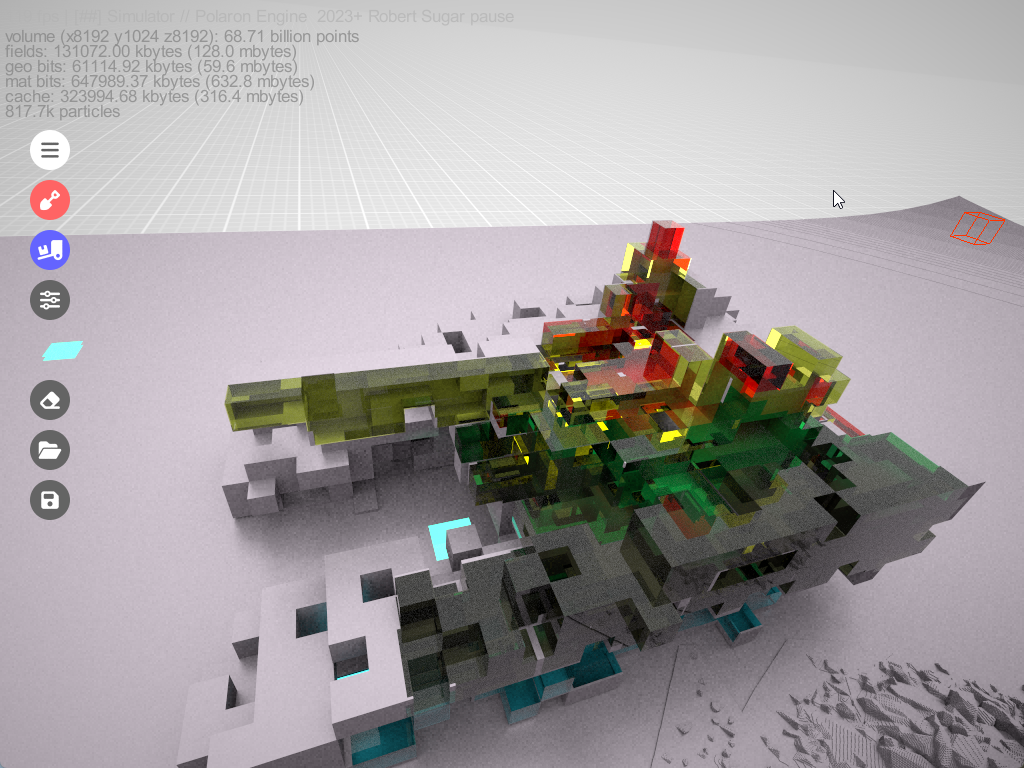
As you can see in more detail elsewhere on the site, we have the ability to not only produce the form of an object, but add data values to it. Enabling vulnerabilities and weakpoints to be added to creatures, vehicles and inherent properties to be added, augmented, or damaged.
This allows for a highly dynamic fight – allowing some vehicles to tear through buildings, and other creatures to even rip off parts of a structure and hurl them, to burrow or target specific points. For instance a swarm of smaller creatures can disable systems on a vehicle or attack the engine (focussing on heat and emissions) to disable the vehicle without having to destroy it completely. Meaning the vehicle might be repaired or recovered.
Likewise a wounded Writhe creature can be felled without killing it, and can be captured to research or re-absorbed by the Writhe or re-grown.
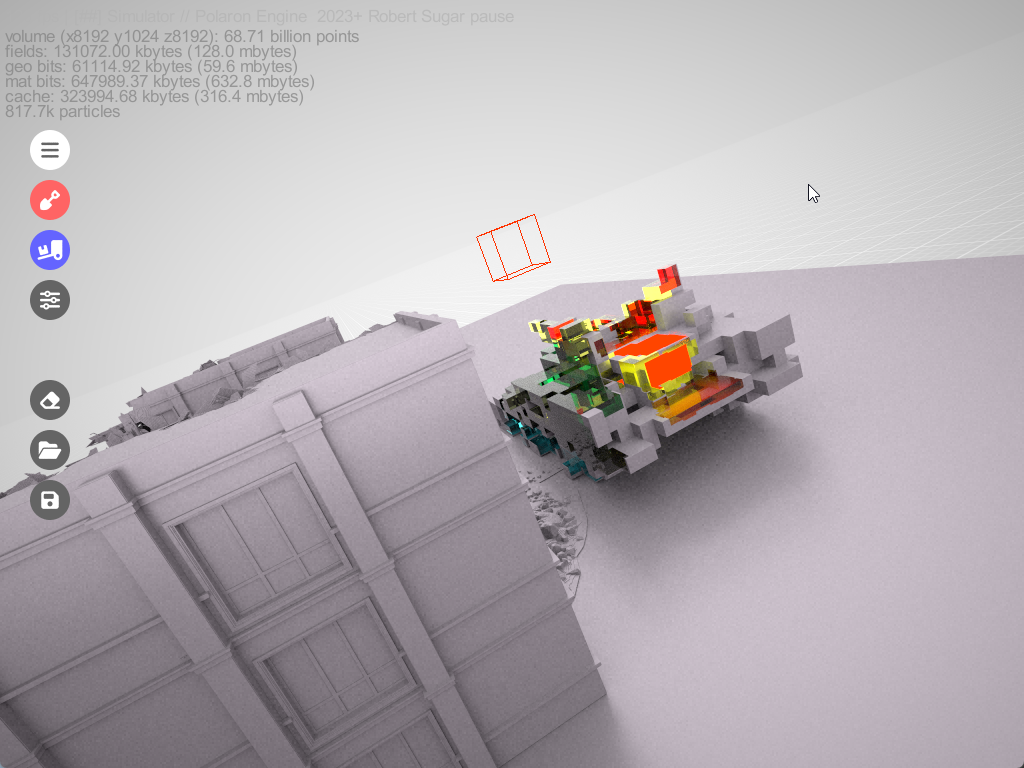
Units, Clutter and Procedural generation
We’re now actively working on creating the base assets for the game. You can see some early test with different Voxel models around the size and scale and theme.
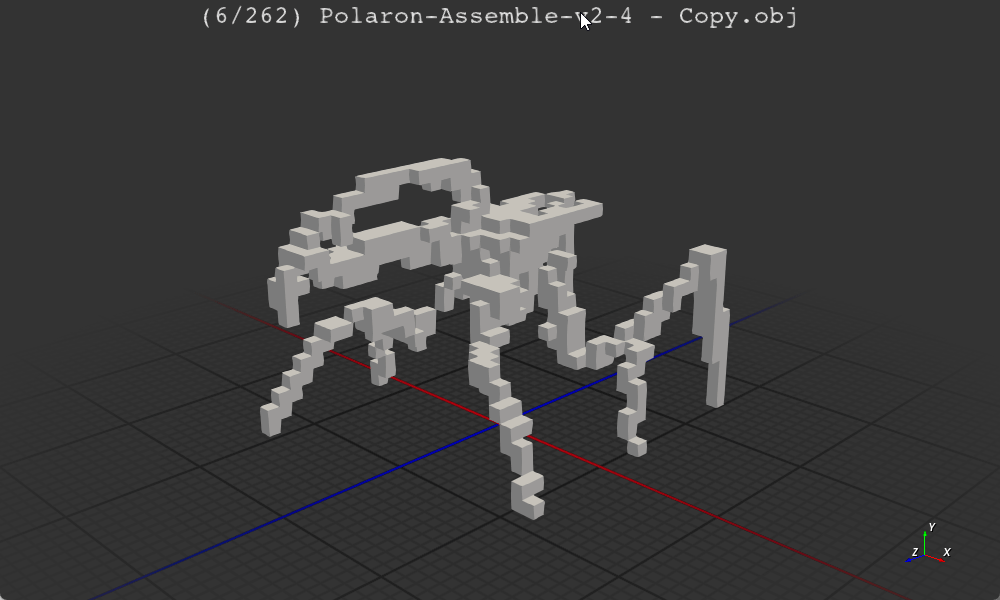
Single threaded physics
This means mega destruction on a GPU in realtime. All the Chaos!
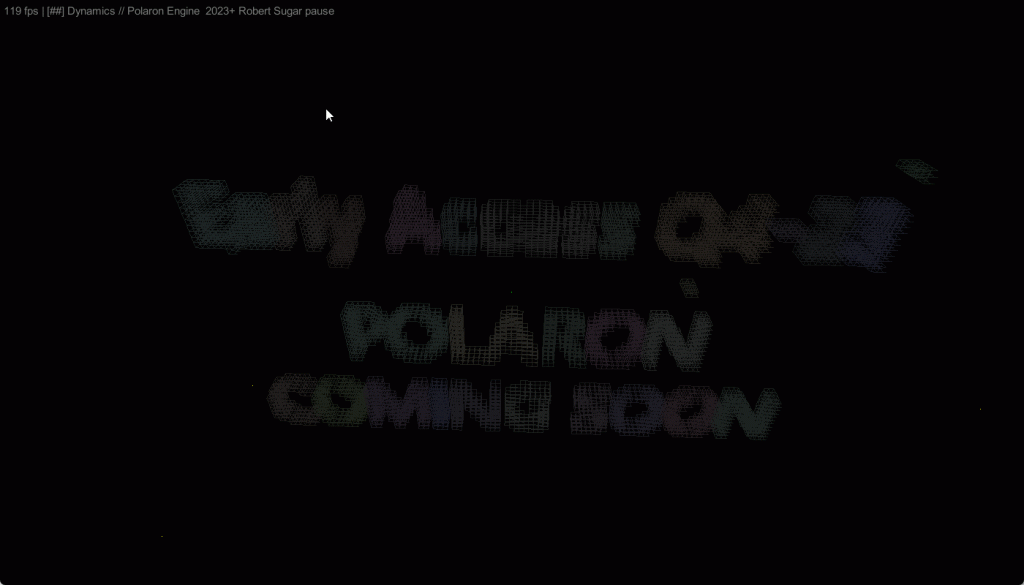
Come and join our Early Access programme.
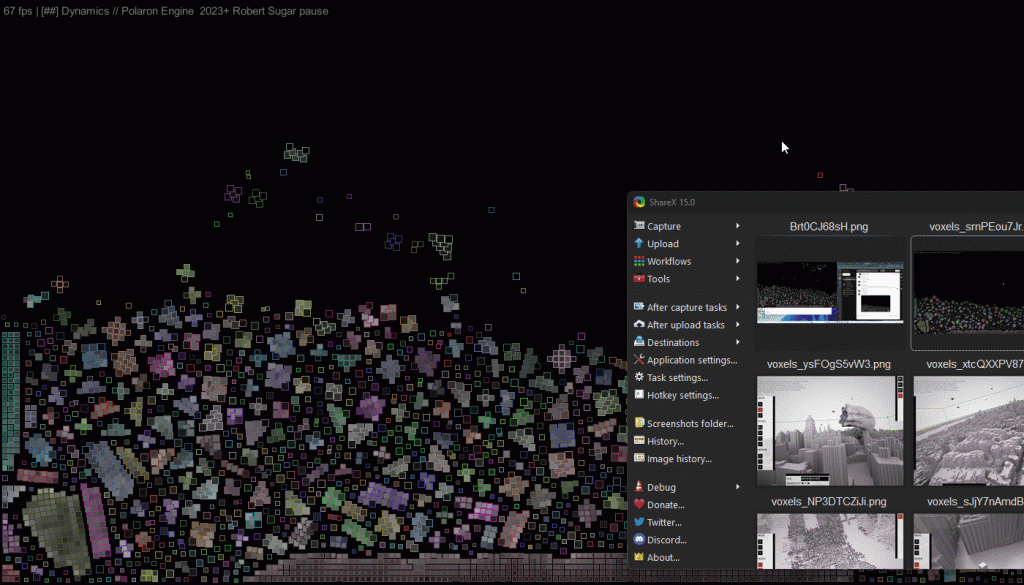
High and low complexity models and scenes
Since the engine works based on common properties we’ve been experimenting with different scales and permitting some levels to be played out in higher detail – or having some areas with more detail.
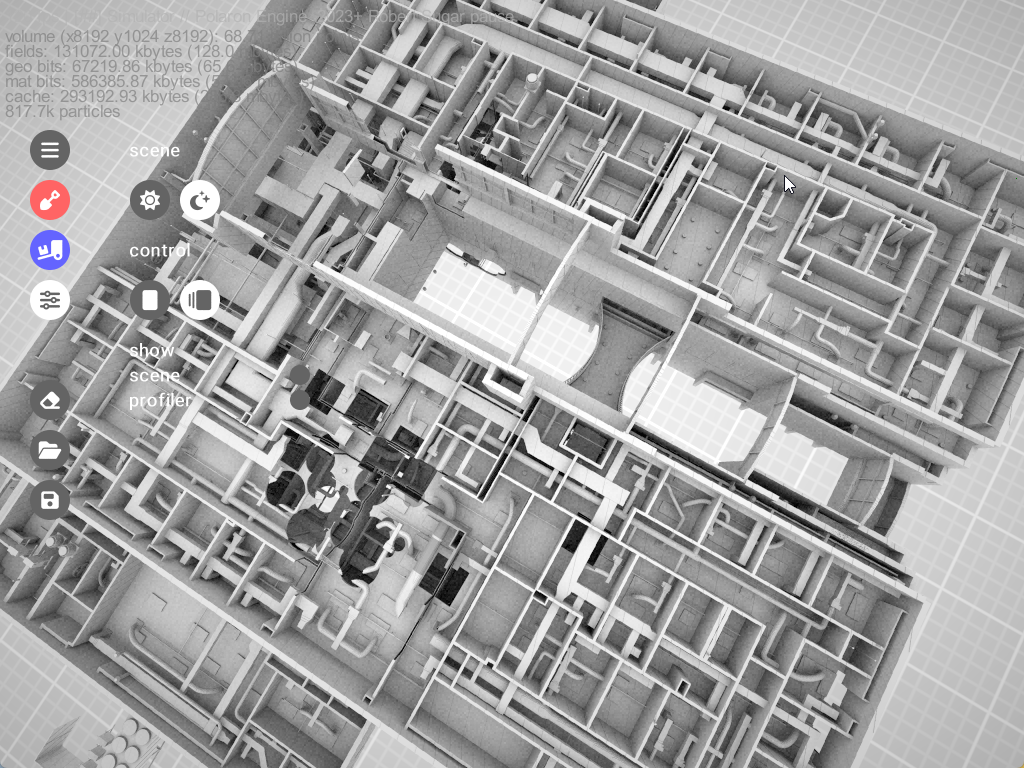
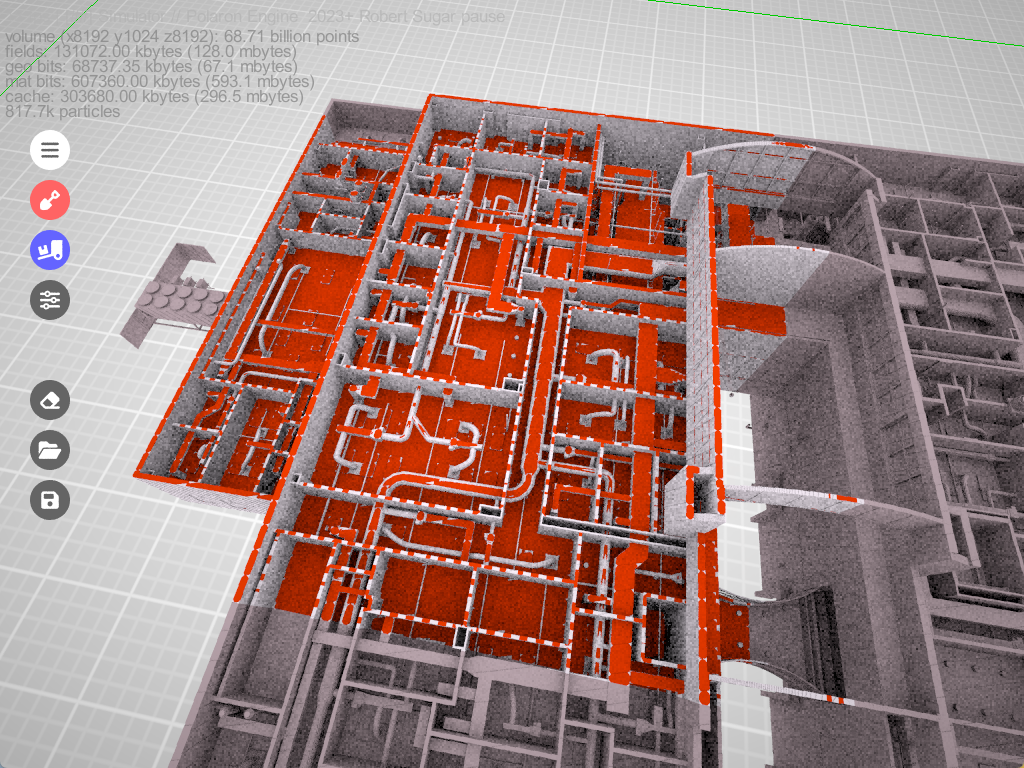
Drones and fire
We can generate pathfinding for semi autonomous manoeuvre and use a swarm of UAVs for stress testing. We also want to use splines for the pathfinding in environments using a field based technology to make this dynamic and realistic – and fun!
We think we can support many thousands of these – having already developed a fast method to manage and determine spline generation on the fly.
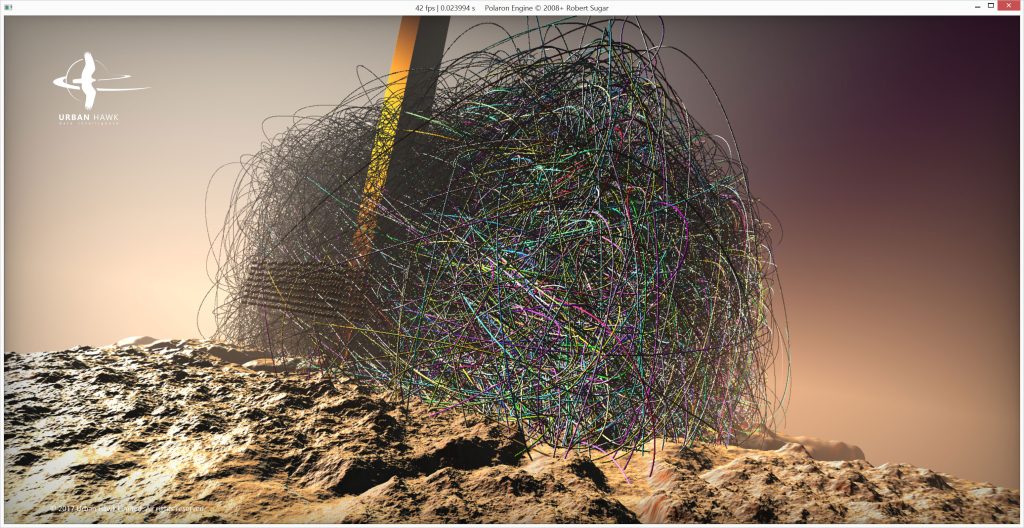
Building details – roof layouts
We can generate roofs and even down to tiles – at 25cm resolution – meaning you can chip away at a tile, or punch through, burn it or even just survey it’s thermal properties to see if there is still a Civilian in there, or if the Writhe have occupied it.
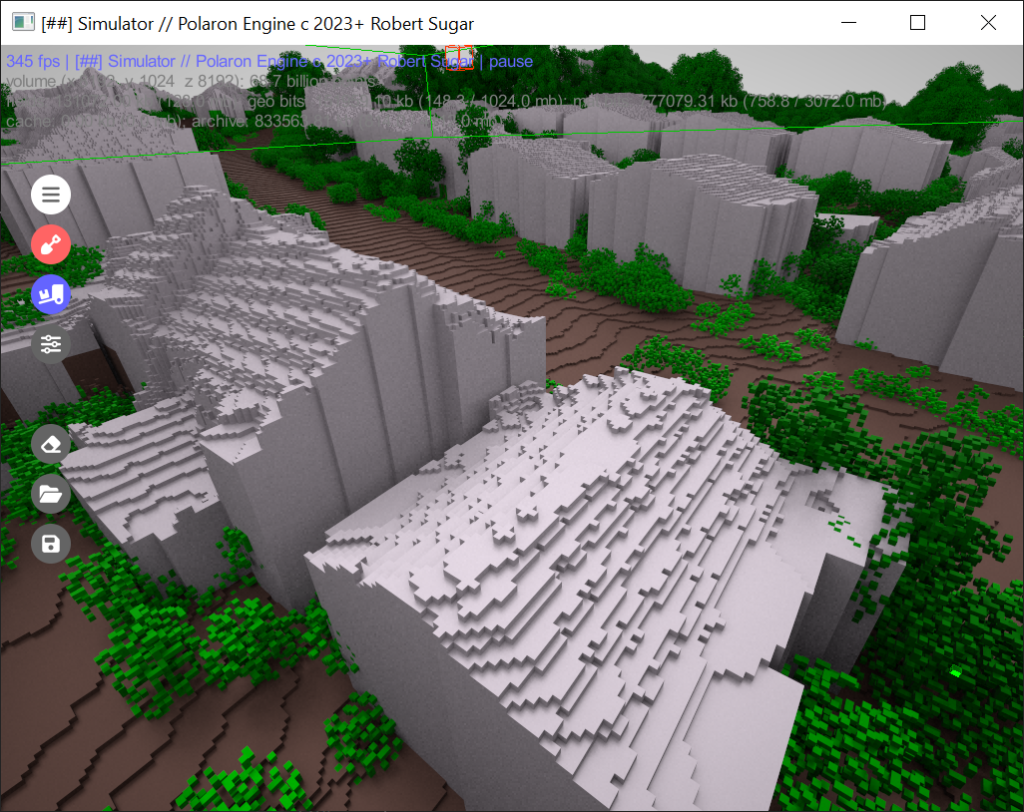
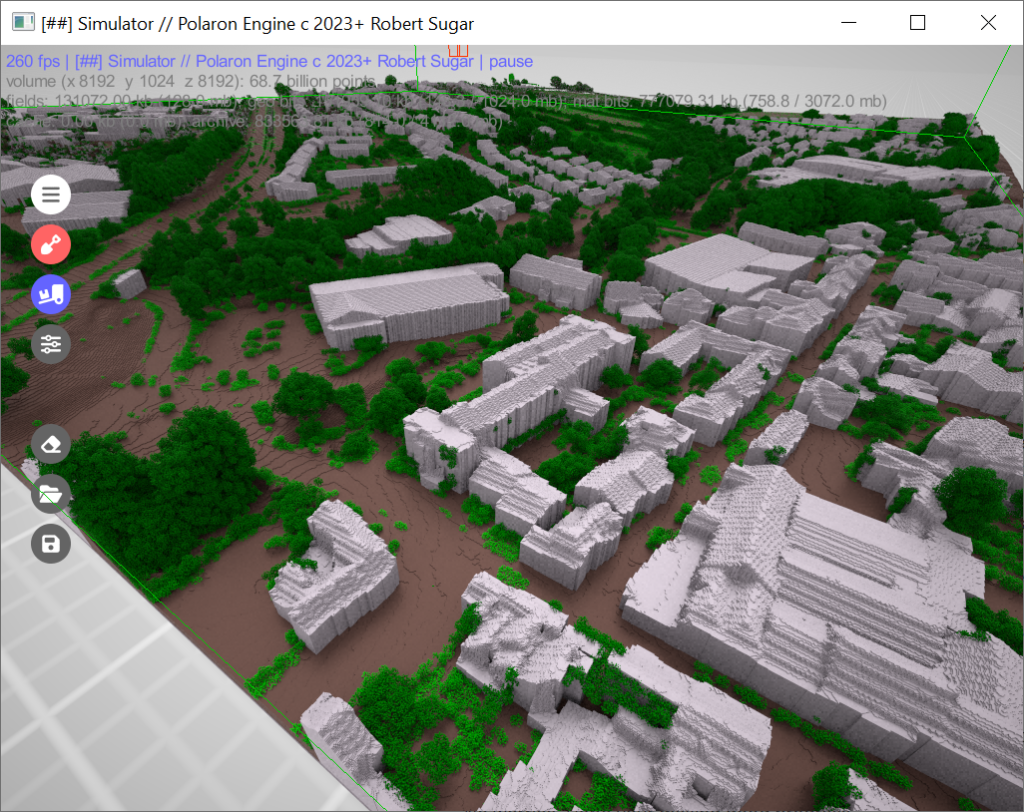
Don’t like the layout of your house, jump in edit the details or voxel model, and bake it back into the scene. Then share it back with the community. A lot of these maps will have human tuned elements – and we also want to have different stages in the crisis.
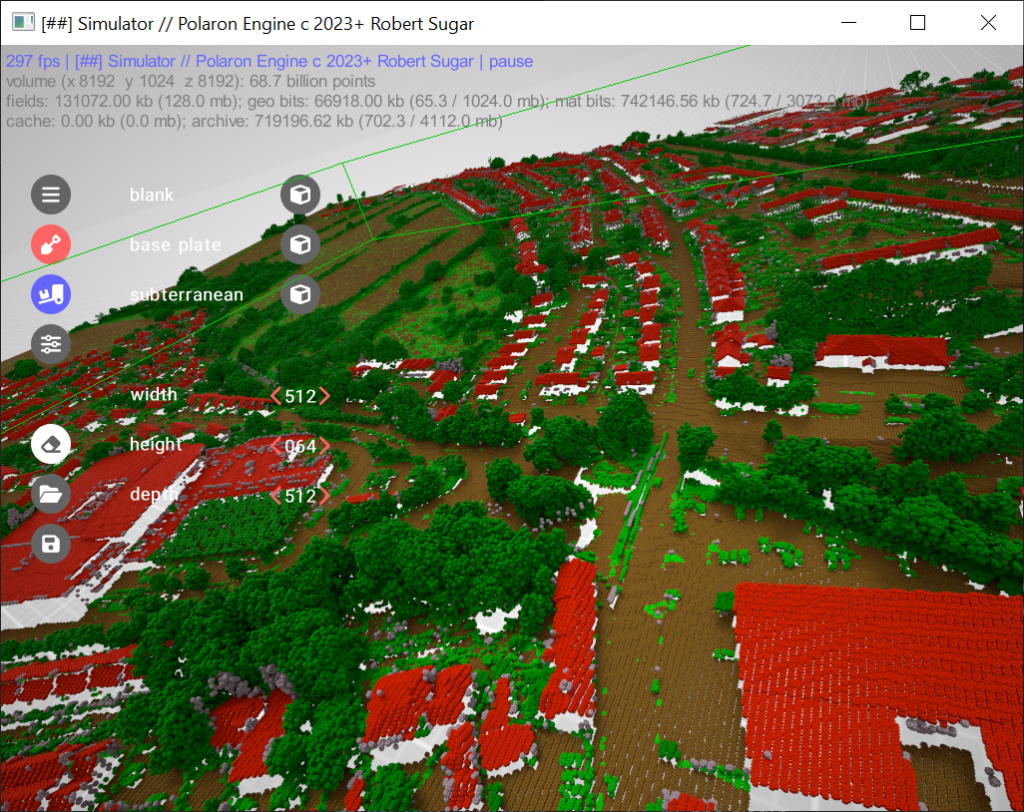
Playing with Infrared Data in an Urban Environment
As we mature this component we will add in internals and infrastructure – to make it more fun, explosive and combustible. Sometimes the safest route is go through the wall and not around it.
User driven feedback
We’ve been incredibly lucky to receive some amazing feedback from different communities online.
We want to make the game you want to play.
We’ve created a few online groups to facilitate this – and to sweeten the deal will offer some free Steam Keys to our Beta testers and the biggest and best contributors.
What’s amazing is to see a real appetite for the sorts of dynamics and mechanics Polaron engine unlocks. We can’t build them all in one go – therefore we’d much rather build the best the community has to offer and get their feedback.
Some concept highlights
I think its a great feature because it creates a dynamic battlefield.
For example in Men of War all the craters can act as cover for advancing infantry.Or a tank driving through a wooden building opens up a new route of attack.
Stuff like that is really cool.den building opens up a new route of attack.Stuff like that is really cool.
It also creates interesting choices like i can blow up this building but I can also assault it and use it as a new anchor point for an attack.
Sproeier
We really like this concept – and it’s part of the materials and demolition theme, we’ve been assembling and augmenting a huge database of values for materials. A modern brick house is hard, a Victorian brick house is often much softer, wood vs steel and stone vs concrete, etc
The main thing is creating new tactical situations, and maybe not even intentionally.
There’s the obvious, destroying a bridge, etc, but Tiberian sun already had those.
Then there’s the thing: big battles might inadvertently change the terrain as to make it impracticable, more difficult to traverse, or change how units van take cover in it. For instance, a long plain suddenly becomes rough terrain, where there are many options to obfuscate like of sight, or where vehicles move slower.
Perhaps even a tunnelling unit/option so that maybe units can go through a mountain, for a surprise attack or a better logistical option, or maybe pull of a Messines contingency.
Now deleted account.
This is great feedback and we’d been thinking about the sub-t environment as well as the very large scale destruction of an urban or peri-urban area. Giant mines are clearly going to be fun as are the constraints on manoeuvre that create dilemmas and consequences of action.
Do you have materials in the simulation? Because if you do you can really go wild. You could have soft soil that heaver units can’t move through, buildings be physically objects that leave rubble when destroyed, so now fighting in an area would drastically change what kind of units you could use there.
Bigger_then_cheese
We are making a massive database and want to shape the capabilities and manoeuvrability of each unity around this, as well as supporting fires and effects.
In order for the effort to pay off, you need to think about how this destruction of the environment is supposed to affect the gameplay. For example, in StarCraft 2 there are very simple objects – rocks to be destroyed, which can block (collapse) or unblock a road. A simple mechanism, but it has a real impact on gameplay.
In recent Stormgate alpha gameplay showcasing we can see trees that only smaller units can squeeze through, but there are ways to destroy trees and create passages through which anything can squeeze (big units too). Graphically, it’s not particularly complex, but it’s cool because it affects gameplay and it will give you opportunity to make strategic decisions (I destroy trees to create a shortcut for my units, but at the same time I create a passage for enemy units, or I go a long way).
In Warcraft 3 trees was a resource and by cutting them player influenced the shape of the map.
Wraithost
This is a key point – that we think should become more important as the damage increases. Therefore preventing or fostering the preservation of some areas and the destruction of others and canalising attacks.
Occupy the Highstreet, hospital, powerplant, railway, etc
We think that some locations can also hold a strategic value, e.g. rescuing a hospital or defending it, or being forced to attack it or deny the enemy resources creates a lot of dynamics and shapes the missions and objectives. It may also be possible to lure in or boobytrap and mine certain areas, making it costly to assault outright and allowing for the orchestration of multi-pronged attacks, feints, deception and encirclement.
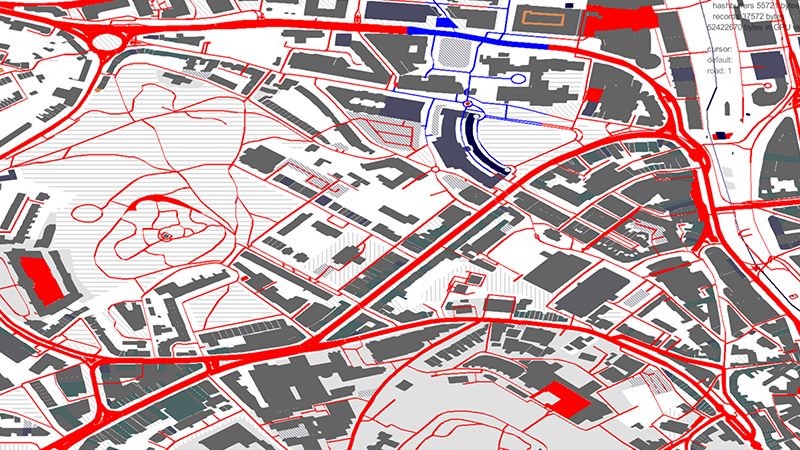
Procedural vehicles
Different vehicles have different properties, and at different scales.
It becomes necessary to create and use and Ontology of assets for different vehicles, both contemporary and near future. By exposing some of these it becomes possible to balance the vehicles mix and allow for a lot of variety and customisation, upgrades, modifications and customised vehicles to fight the Writhe.
Volvo’s are likely to feature.
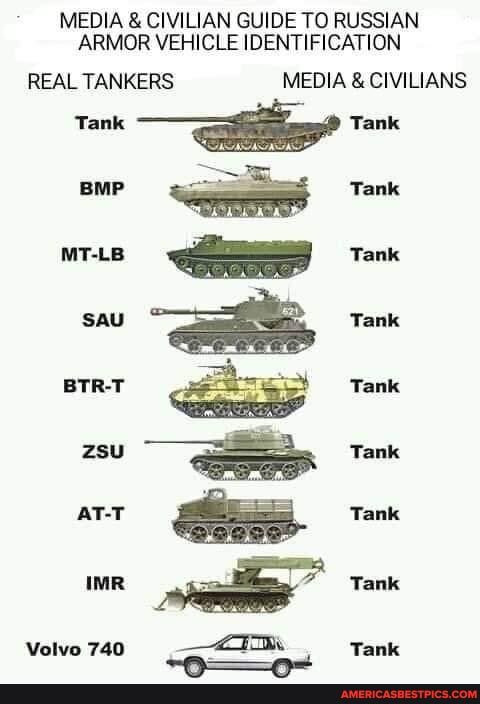
No easy choices
The setting presents an interesting simulation of competing and supporting resources and structures, be it the availability of water, munitions, reinforcements or materiel.
Choices that have to be made can be made again, with story driven paths layed out in order to educate and immerse the player.
Comedy = Tragedy + Time / Timing is Everything.
For all the seriousness of the simulation, we also want to have a lot of comedy inside of the game. The Writhe is child like at first and must explore and discover it’s surroundings, appetites and resources growing in wit and insight as it develops.
Ultimately this is meant to enhance the experience and something we will need to experiment with.
NPC –What do you call an overweight E.T.? Extra Cholesterol.
Writhe – When consuming a scientist – “Mmm tastes like 5 year matured PhD”
Writhe – Consuming a pharmacy may experience some Side effects.
NPC – When a monument is destroyed – ” Damn you – you blew it up – Damn you to hell you damned dirty aliens”.
This will get better.
A baseless strategy.
At present we think that the humans should always receive off map support – which focuses the player on the tactical and operational side of the experience. The exception being that a FOB and Casualty Clearing stations can be put in place. This allows for interaction between off map assets and the on map resources – and allows for MSRSs (main supply routes and evacuation corridors) to be created – facilitating the evacuation of civilians. These corridors (lanes if you will) also focus the fighting since cutting off an evacuation route gives the Writhe both time and resource and denies this from the Human player, however it doesn’t allow for snowballing and balances out entrenchment and turtling which isn’t fun for anyone except the turtling player.
We do want the Writhe to have a base, or rather something akin to a hive mind that anchors it, and therefore forces a defensive aspect to their gameplay. We have some plans around their resources and a subterranean aspect – which balances out the humans’ asymmetric advantage in the air (at least at first).
This approach also encourages the writhe player to hug the enemy and civilian population, since it prevents use of very destructive weapons, which aren’t’ allowed near civilians (or at least not at first). These dynamics won’t be perfect – which is fine – since these battles and combat systems are designed to be fun, fluid, scrappy and dynamic.
Juggling all of this – as the terrain is engulphed, damaged, destroyed and move and countermove plays out as each side vies for dominance.
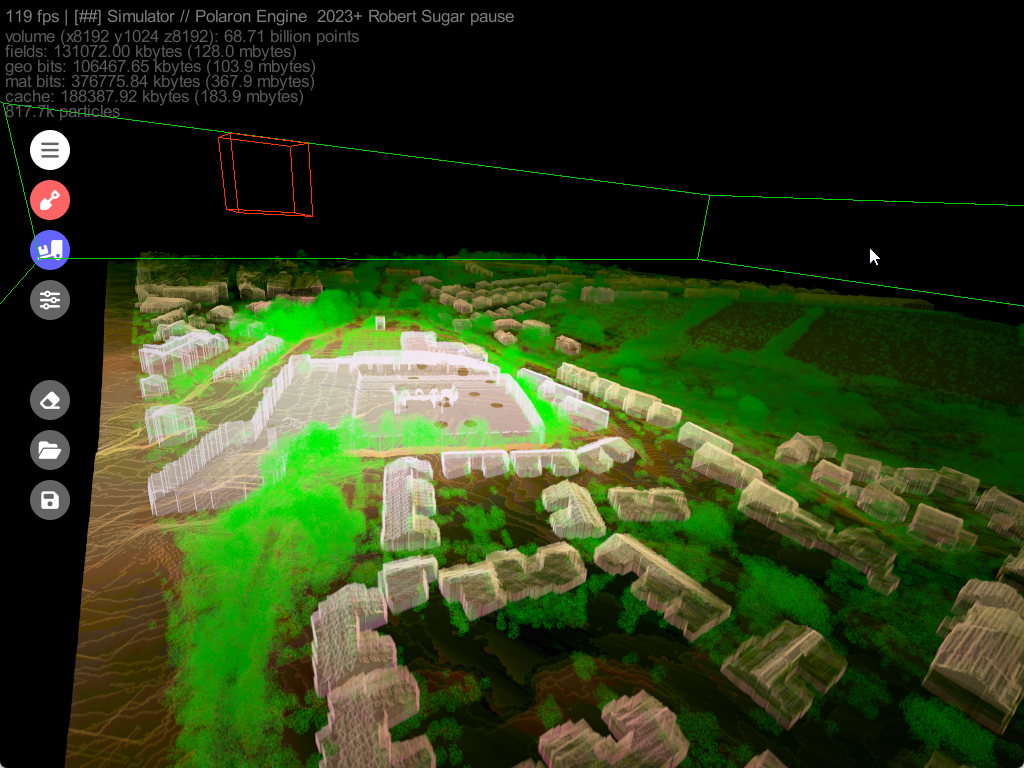
Hard Choices & Dilemmas
Prevent the expansion whilst rescuing the civilian population
With limited resources and constraints on how you can use artillery and air support (*you can’t just level the city from the get go) – you will need to balance feeding the fight, and rescuing the populace.
The Writhe meanwhile want to capture the populace and deny your ability to combat them. Juggling this will be a key challenge.
Water, Supplies and Combat Power
Everything needs to drink, eat and needs supplies to keep going. Managing this – as either the expansionist Writhe or the Countering Human faction is critical. This also places more weight on certain infrastructure and it’s denial, destruction or capture. Both offering boosts to each side and effecting the civilian population
Plan Defences and occupy key locations.
Whether Writhe or Human – reading the terrain and using it your advantage is critical.
The City is not neutral, if you loose power it will impact systems and change behaviour. Or denying the Writhe access to key resources, can shape their actions and response. Starve them out or force an action, slow them down and buy time or advantage.
Block by Block
We want to generate the internals of all the structures and force things up close and personal. Where fighting is house to house and block to block, whilst still forcing the player to concentrate on feeding the fight (or feeding the Writhe). Micro isn’t the goal – but this comes with complexity and accidental and incidental actions – from rubble blocking streets to setting off a gas main.

